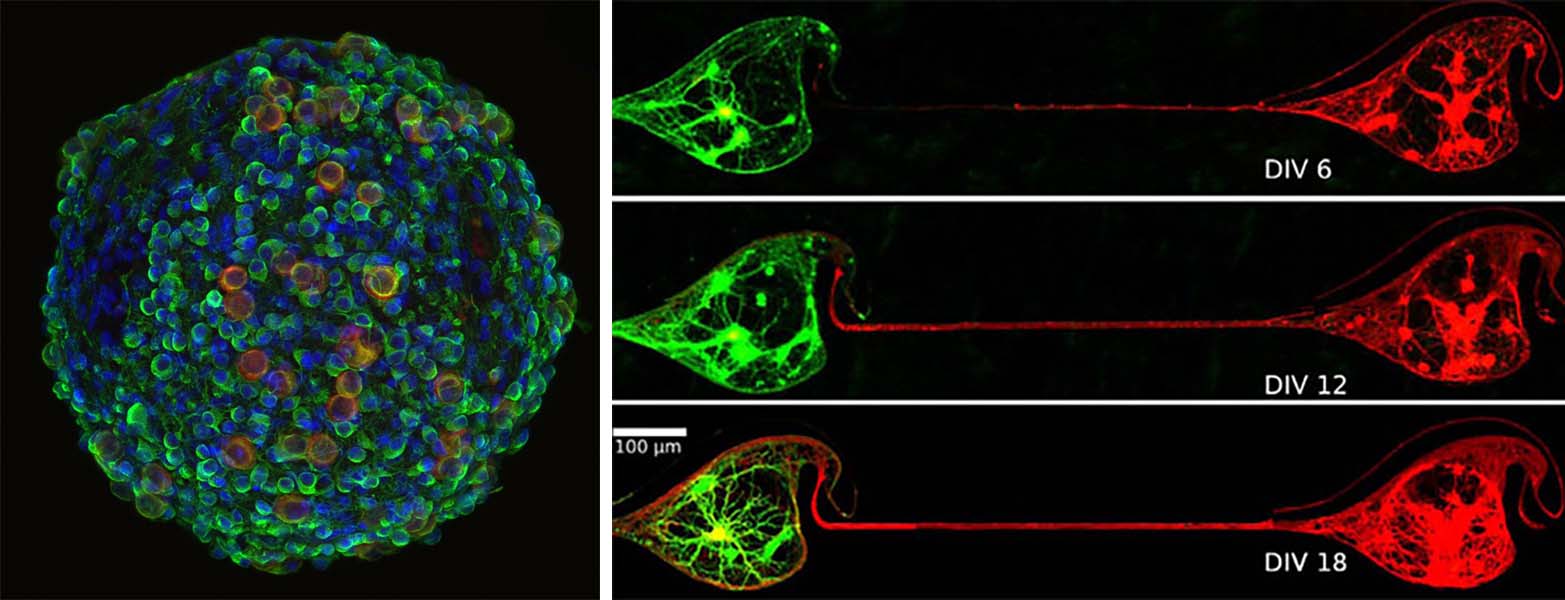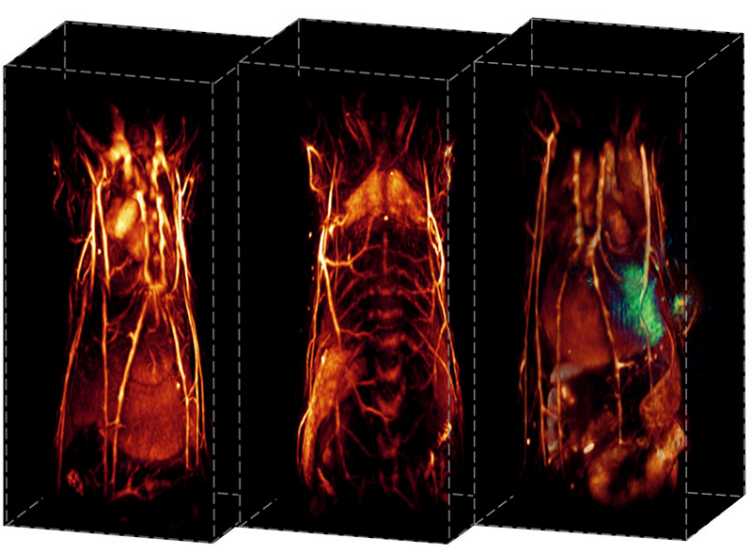3Rs
ETH Zürich actively implements 3R principles, formulated in 1959 by Russel W. and Burch R., in animal research
Replacement
new methods and tools are intensively developed and applied within different departments at ETH to answer essential scientific questions without usage of experimental animals. Alternatives can replace animals either fully (tissues and cells from human subjects, established cell lines, modelling approaches) or partially (primary cultured cells, invertebrates).

The Bioengineering Laboratory actively develops microfluidic, or so called "body-on-a-chip", devices, which combine cells from multiple organs and, thus, can mimic conditions of the human body. Microtissue derived from neurons and cultured in a microfluidic channel is depicted in the 1st image in the gallery. These efforts were acknowledged on the international level by the external page NC3Rs (2014) and the International Global 3Rs Award (2016).
The Laboratory of Biosensors and Bioelectronics currently established a sophisticated method of growing controlled neuronal networks, where basic memory and learning processes are investigated on a single cell level. Unidirectional axonal growth (from right to left) is shown in the 2d image.
Reduction
refers to methods and strategies, which allow to minimize the number of animals used in experiments preserving high quality and reproducibility of research. During planning of animal experiments researchers at ETH can get direct statistical consultation or employ available on-line experimental design tools like external page EDA in order to use as few animals as possible.

external page Multiscale Functional and Molecular Imaging group introduced a new technique of spiral volumetric optoacoustic tomography (SVOT), which enables a high quality 3D visualization of a moving organ, a selected area, e.g. tumor, or the whole body in real time in the same animal. Thus by avoiding animals' termination at different time points this methods leads to significant reduction of number used animals.
Refinement
includes methods and strategies aimed to avoid or minimize impact on the animals and improve animal welfare in experiments as well as through the lifetime of the animal. Proper external page handling, usage of appropriate anesthesia and analgesia are just some examples of refinement principles used by researchers at ETH.
3R news from ETH
Automated analysis of animal behaviour
Researchers have developed a new method that uses artificial intelligence to analyse animal behaviour. This opens the door to longer-term in-depth studies in the field of behavioural science – while also helping to improve animal welfare. The method is already being tested at Zurich Zoo.